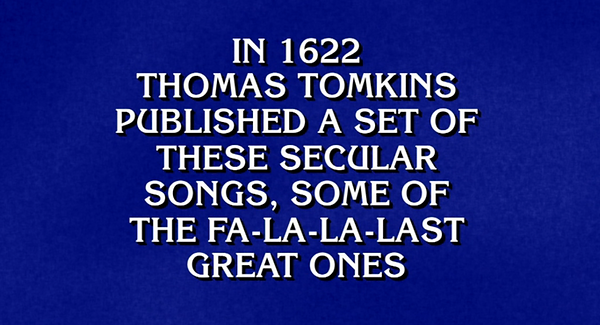A New Fa-la
Non-lexical vocables such as 'fala' and 'heigh-nonny-no' are so deeply engrained in early modern English polyphonic song that they remained an iconic feature of this repertoire even today, with regular appearances at May Day and Christmas. Nonetheless, they were left out of Edmund Fellowes’ classic edition English Madrigal Verse (1920) for having 'nothing to do with the poem'. My research in this area makes the case for the musical/textual significance of non-lexical refrains.
While such refrains may appear void of meaning, they are effectively symbols rife with musicalised significance, sometimes drastically altering the very meaning of the poetic text. Paradoxically, the lack of definite lexical meaning created a vacuum that increased the semantic potency of these refrains. This body of research, focusing on satire, the history of emotions, and performance studies aims to provide the first comprehensive study of musical meaning in early modern 'nonsense' syllable refrains. It will demonstrate that contemporary use of the Elizabethan/Stuart non-lexical vocable was far more meaningful than our current understanding permits, an argument with robust implications for musical-textual relationships and the creation of meaning in performances of English song. This study will significantly deepen our understanding of music’s communicative functions in early modern England, which operated on symbolic and expressive levels. Having hardened into a symbol of national heritage, these ‘phatic’ tropes are still relevant to modern audiences and remain a part of current-day musical practice, particularly when invoking historical Englishness.


Research Questions
-
How were non-lexical vocables used to convey meaning? What modes were most commonly used?
-
How does non-lexical music alter textual meaning? What are its broader implications for musical-textual relationships in English song?
-
How do listeners inscribe refrains with meaning?
-
How does the possibility of meaning in these refrains alter the traditional historiography of these canonical genres?
-
What role have non-lexical vocable refrains played in twentieth century and later representations of historical Englishness, particularly in comic opera and art song.




